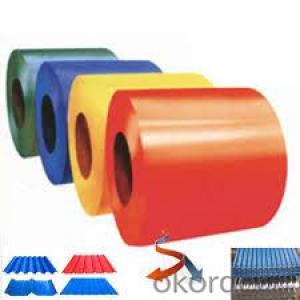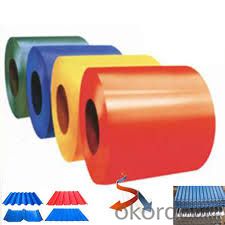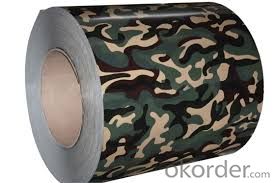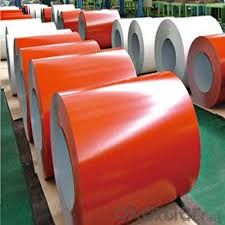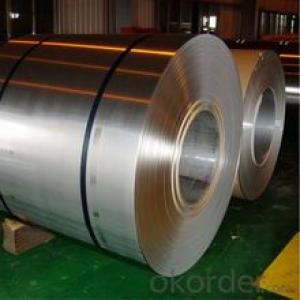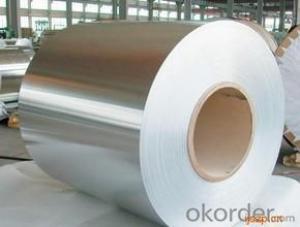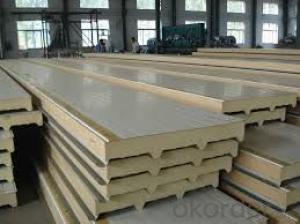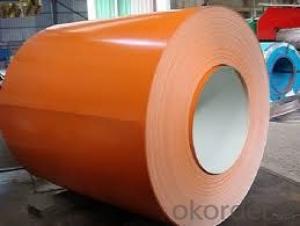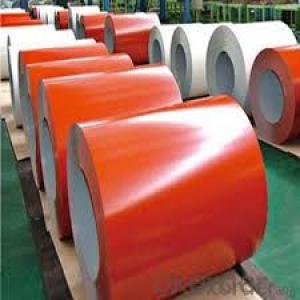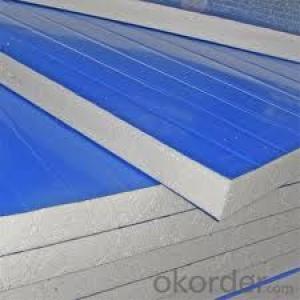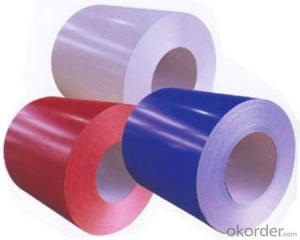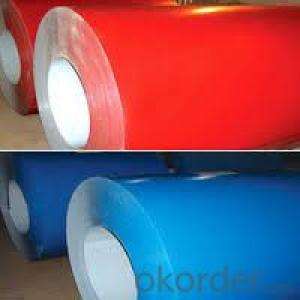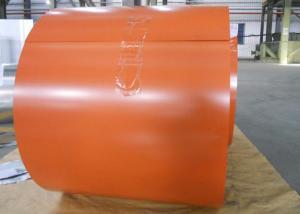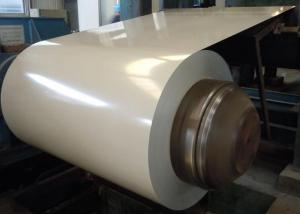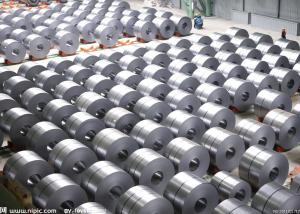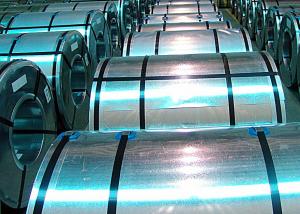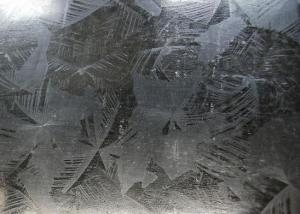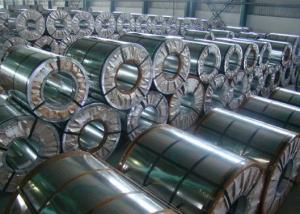Prepainted Cold Rolled /Pre-painted Galvanized Steel Sheet Coil/Pre-painted Steel Coil/PPGI
- Loading Port:
- China main port
- Payment Terms:
- TT OR LC
- Min Order Qty:
- 25 m.t.
- Supply Capability:
- 1000 m.t./month
OKorder Service Pledge
OKorder Financial Service
You Might Also Like
Specifications
cold rolled strips
1. width: 19-1500mm
2. thickness :0.2-3.0m,2.0-13.5mm
3.zinc coating:z60-z275
4.GB,JIS,ASTM,DIN,EN
cold rolled strips
Product Description
Brand : ZHCX | Standard: ASTM; ASTM; EN;GB | Grade:DX51D /DX52D/DX53D/ S250,280,320GD,Q195,Q235,etc. |
Thickness: 0.2-3.0mm 2.0-13.2mm | Width:19-1500mm | Length:Coil or upon request |
Zinc Coating: 40g- 275g/m2 | Surface: zero spangle, min spangle , regular spangle ,big spangle | Application: PPGI coil;construction,hardware, home appliances,interior decoration etc. |
Coil ID: 508-610mm | Coil Weight: 3-5 tons | Type : coil or sheet |
Packing: | 1.wooden case or wooden pallet 2.standard seaworthy packing | |
Delivery Time | Within 7-25 days after received the deposit | |
Brief Introduction
1. Prepainted Galvanized Steel Coil is coated with organic layer, which provides higher anti-corrosion property and a longer lifespan than that of galvanized steel sheets.
2. The base metal for Prepainted Galvanized Steel Coil is HDGI Steel. The finish coats of Prepainted Galvanized Steel Coil can be classified into groups as follows: polyester, silicon modified polyesters, polyvinylidene fluoride, high-durability polyester, etc.
3. The production process has evolved from one-coating-and-one-baking to double-coating-and-double-baking, and even three-coating-and-three-baking.
4. The color of the Prepainted Galvanized Steel Coil has a very wide selection, like orange, cream-colored, dark sky blue, sea blue, bright red, brick red, ivory white, porcelain blue, etc.
5. The Prepainted Galvanized Steel Coil can also be classified into groups by their surface textures, namely regular prepainted sheets, embossed sheets and printed sheets.
Edit
Because there is no after annealing treatment, the hardness is very high (HRB greater than 90), mechanical processing performance is poor, only a simplebending process has less than 90 degree directional (direction perpendicular to the rolled).
3, use three
Edit
Hot rolled products with high strength and good toughness, easy processing and good forming can be excellent performance of welding, which is widely used in ships, cars, bridges, buildings, machinery, boiler, pressure vesselmanufacturing industry.
The scope of application:
(1) after annealing processing into the common cold;
(2) processing galvanized galvanized unit before the annealing treatment;
(3) the basic do not need to process the panel.
4 four, classification
Edit
Carbon steel plate, carbon plate, low alloy plate, ship plate, bridge plate, boiler plate, container plate etc.. Rolling hard volumes: under normal temperature,the hot pickling volumes of continuous rolling.
Hot rolled steel strip products include steel (roll) and the shear of steel plate.And steel (coils) can be divided into straight and finishes volume (the volume,smooth rolling and slitting roll).
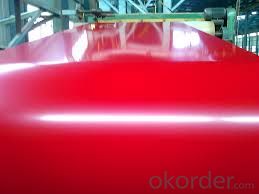
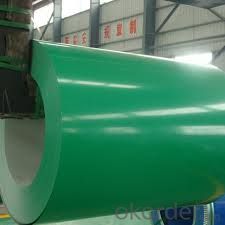
- Q: What are the quality control measures for steel coils?
- Quality control measures for steel coils include conducting visual inspections to check for surface defects, such as scratches, dents, or discoloration. Measurements are taken to ensure the proper dimensions and thickness of the steel coil. Mechanical properties, such as tensile strength and yield strength, are also tested to ensure they meet the required standards. Additionally, tests may be performed to check for coatings, such as zinc or paint, to ensure they are applied correctly and adhere properly to the steel surface.
- Q: Can cold rolled galvanized steel coils be acid washed after oxidation?
- Hot rolling is made of slabs (mainly continuous billets) as raw materials. After heating, strips are made from roughing mills and finishing mills. From the last finishing mill stand out of the hot strip laminar cooling through to the set temperature, the coiling machine rolled strip steel roll cooled, according to the different needs of users with different finishing line (flat, straightening, transverse or longitudinal, inspection, weighing, packing and marking etc.) processing and become steel, flat steel product volume and slitting.
- Q: What are the dimensions of steel coils used in the agricultural equipment industry?
- The dimensions of steel coils used in the agricultural equipment industry can vary depending on the specific application and equipment. However, common dimensions for steel coils used in this industry typically range from 0.5 to 3 millimeters in thickness and can have varying widths and lengths, ranging from a few inches to several feet.
- Q: i am debating weather to get the hercules rmx or the steel and from what i have read, the only differences between them is the rmx has a sound card (built in interface-to connect to the computer, correct me if im wrong) and that the steel has more effects. however, i cannot find out which effects it has so it would be a big help if someone can answer this for me.thanx
- I guess that since Steel doesn’t have headphones connection and a built-in soundcard, one won’t be able to play a track on one deck and prelisten the track on the other without using an external usb soundcard, right? I was wondering what’s the point in releasing a product like this if you also have to buy a bunch of equipment to be able to do sth “fondamental”: play while preparing your next song. However since the steel is meant for DJ’s who already have a great soundcard, but I don’t see why a Steel+sound card is ONLY for pro’s. Yes it’s designed for pro’s but you can use it as a beginner. Some consoles you also need to consider: Hercules Steel/RMX, Numark OMNI/Steath. It's all personal decision. Peace, Love Happiness
- Q: it has 2 be 20 inches overall, and 2and1/2 inches wide and .25 or more inches thick... im thinking truck steel but im not sure thx
- A sawmill blade(circular type) It`s good steel already hardened and you saw out your knife pattern with a skill saw loaded with an abrasive cut-off wheel. Norton wheels are best from Home Depot.
- Q: it seems like the hardness of Stainless steel, i saw 410c stainless stell, i saw 440c stainless steel, what does it means anyway?
- 440 okorder
- Q: What are the dimensions of steel coils used in the metalworking tool industry?
- The dimensions of steel coils used in the metalworking tool industry can vary depending on the specific application and requirements of the tool being used. However, there are some common dimensions that are often seen in the industry. Typically, steel coils used in metalworking tools are available in various widths ranging from 24 inches to 72 inches. The thickness of the coils can vary as well, with common thicknesses ranging from 0.020 inches to 0.250 inches. The length of the coils can vary significantly, with standard lengths typically ranging from 100 feet to 2000 feet or more. These dimensions are chosen based on factors such as the type of metal being worked, the specific tool being used, and the desired outcome of the metalworking process. Additionally, other factors such as the weight and handling capabilities of the tool and the efficiency of the manufacturing process may also influence the dimensions of the steel coils used. It is crucial to consult with manufacturers, suppliers, or industry experts to determine the most suitable dimensions for steel coils in the metalworking tool industry, as these dimensions can vary based on specific needs and preferences.
- Q: my homework is a breif description on steel pipe. for plumbing/gas.please help me i dont have a clue where to start, something about the thread and where its used.Thanks,
- Here are a few quick things for you to check into on your own. First, there are a wide variety of materials that pipes can be made from such as carbon steel, stainless steel, aluminum, etc. Second, pipes can be of welded construction or seamless. Sometimes seamless pipes are called DOM (drawn over mandrel). Third, with the types of each pipe are a variety of grades. For example, steel pipe can be listed as A53, A106, A500, A513, etc. Each one of these grades has a different application because of their chemical composition and method of manufacture which effects its strength. Fourth, there is a difference between a 4 pipe and a 4 tube. Last, pipes for fluids are typically threaded with NPT threads. These threads are tapered so that as the pipes are screwed together they become tighter and therefore leak proof. I probably over complicated things but I hope this helped you. Good luck.
- Q: What are the common methods of inspecting steel coils for quality control?
- The common methods of inspecting steel coils for quality control include visual inspection, dimensional measurement, surface inspection, and mechanical testing. Visual inspection involves checking for any visible defects or abnormalities such as cracks, dents, or scratches. Dimensional measurement ensures that the coils meet the specified size and thickness requirements. Surface inspection involves examining the surface finish, cleanliness, and coating integrity. Mechanical testing involves conducting various tests to assess the strength, hardness, and other mechanical properties of the steel coils. These methods collectively ensure that the steel coils meet the required quality standards.
- Q: How are steel coils used in the production of fireproof doors?
- Steel coils are used in the production of fireproof doors as they serve as the core material for the door's structure, providing strength and durability. The coils are typically shaped, cut, and molded into the desired door shape, then combined with fire-resistant materials such as gypsum or mineral wool to enhance the door's fire resistance.
Send your message to us
Prepainted Cold Rolled /Pre-painted Galvanized Steel Sheet Coil/Pre-painted Steel Coil/PPGI
- Loading Port:
- China main port
- Payment Terms:
- TT OR LC
- Min Order Qty:
- 25 m.t.
- Supply Capability:
- 1000 m.t./month
OKorder Service Pledge
OKorder Financial Service
Similar products
Hot products
Hot Searches
Related keywords
